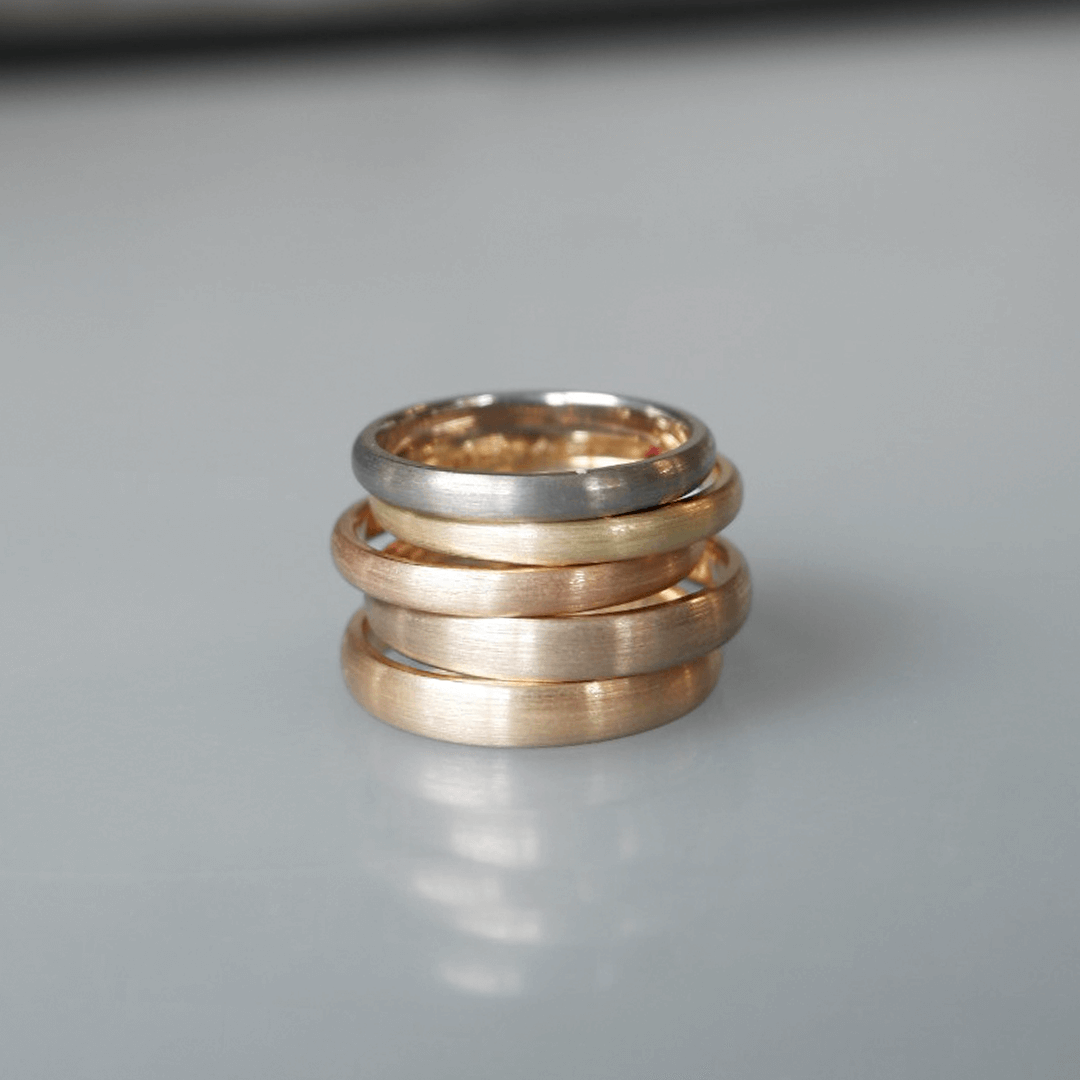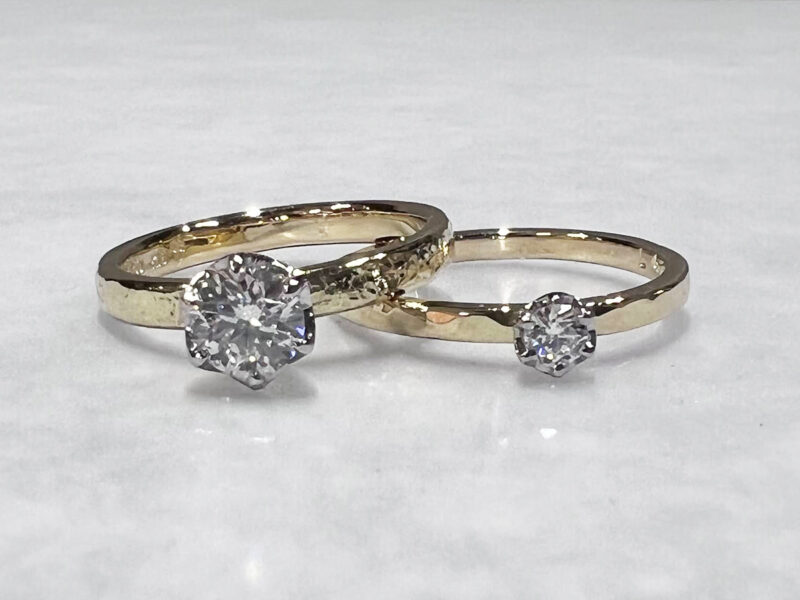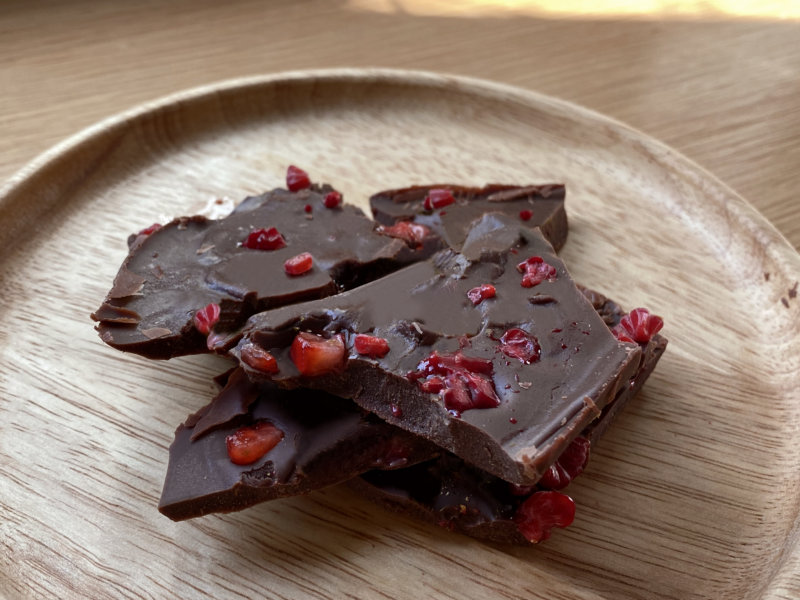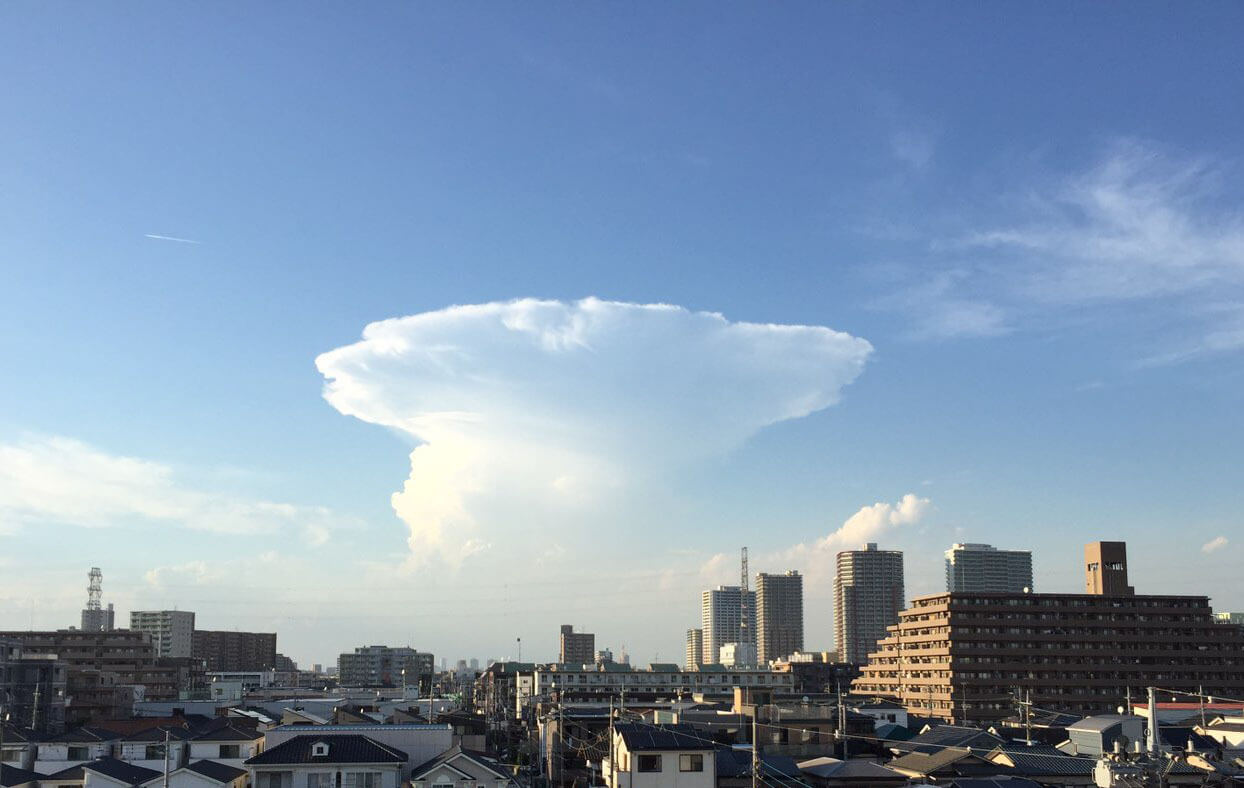This is Shindo from MITUBACI. This time, I would like to study the materials (precious metals) used in MITUBACI.
You may have studied it in middle school or high school chemistry, but I will try to explain it as simply as I can as a craftsman. I would like to talk about precious metals, but first I need to explain what metals are.
Metal Features
In classifying the characteristics of metals, we can divide them into several properties.
Ductility
Meltability
Electrical and thermal conductivity
Glossy
These include
Let me explain each of them!
malleability
It can be beaten, crushed with rollers, bent into rings, and engraved because of its ductility.
Precious metals used in jewelry are highly processable.
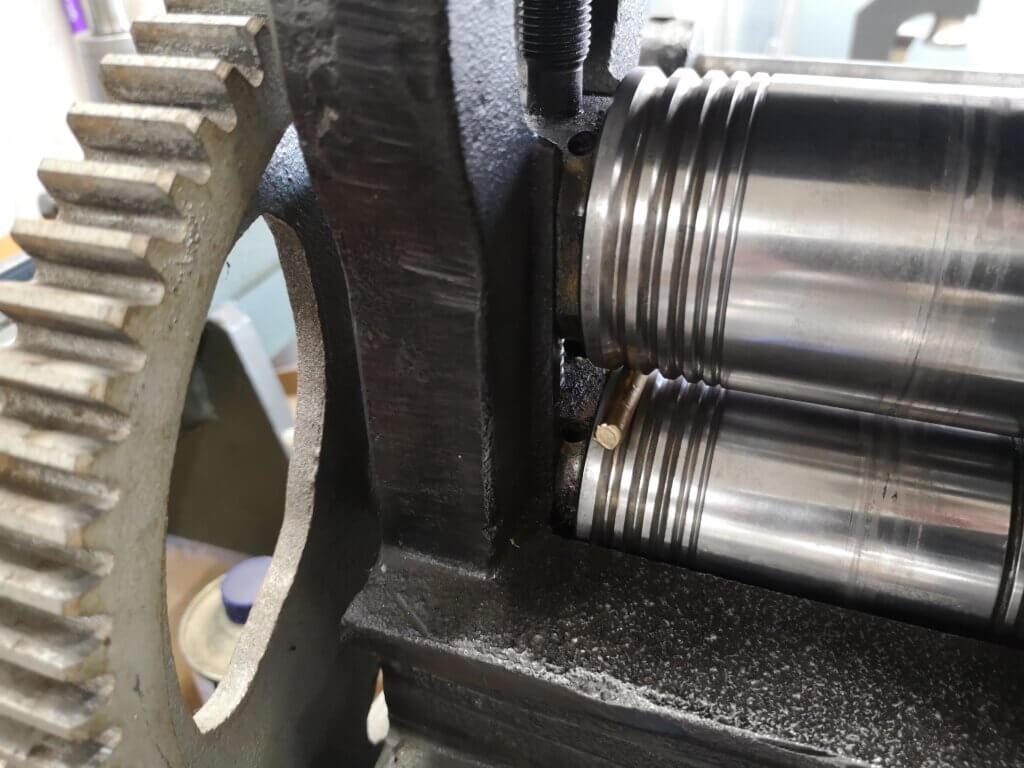
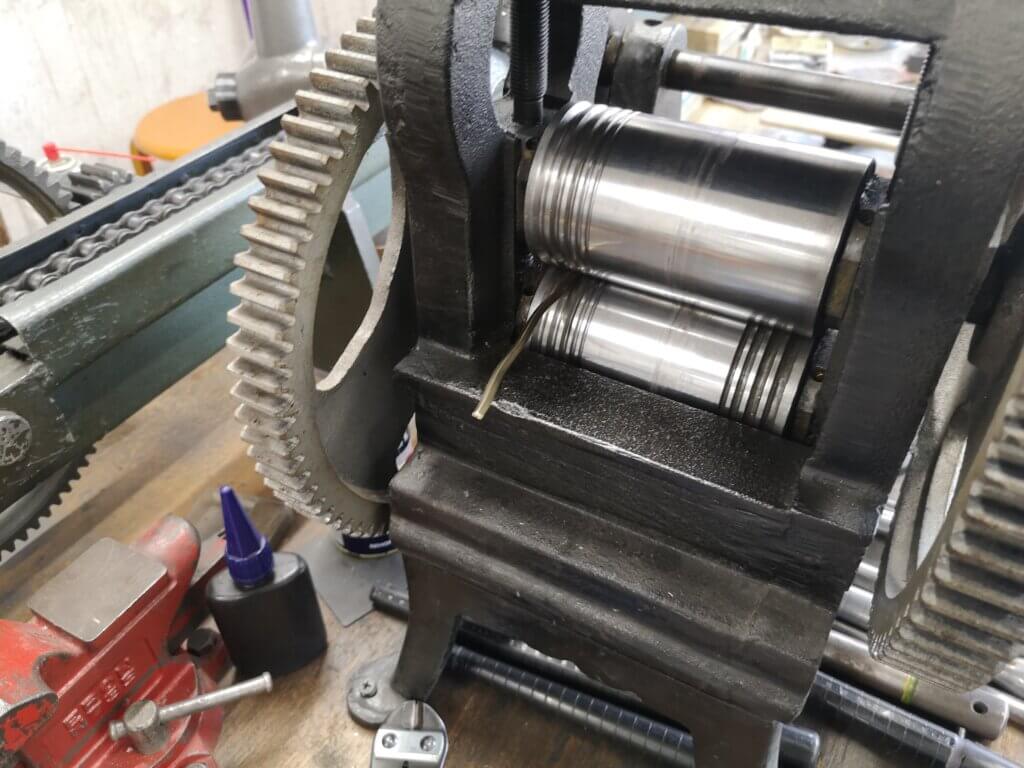
fusibility
Metals are solid at room temperature, but can be melted by applying heat.
When the required material is made, it is melted and poured into a mold to form a bar or plate that is easy to process.
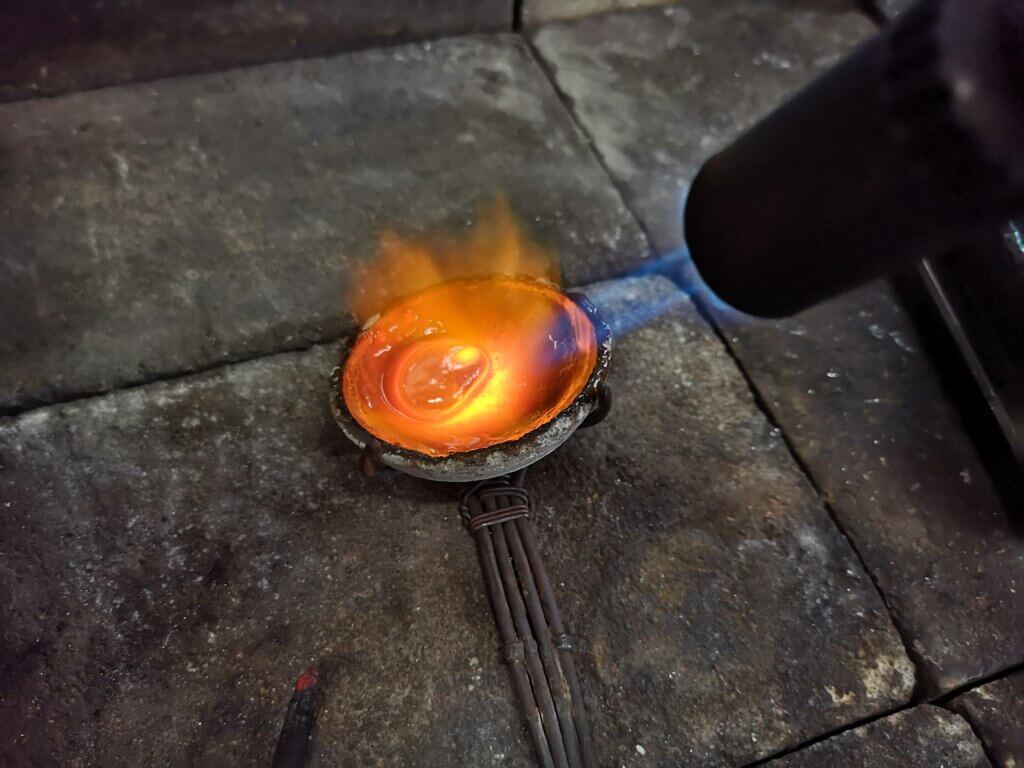
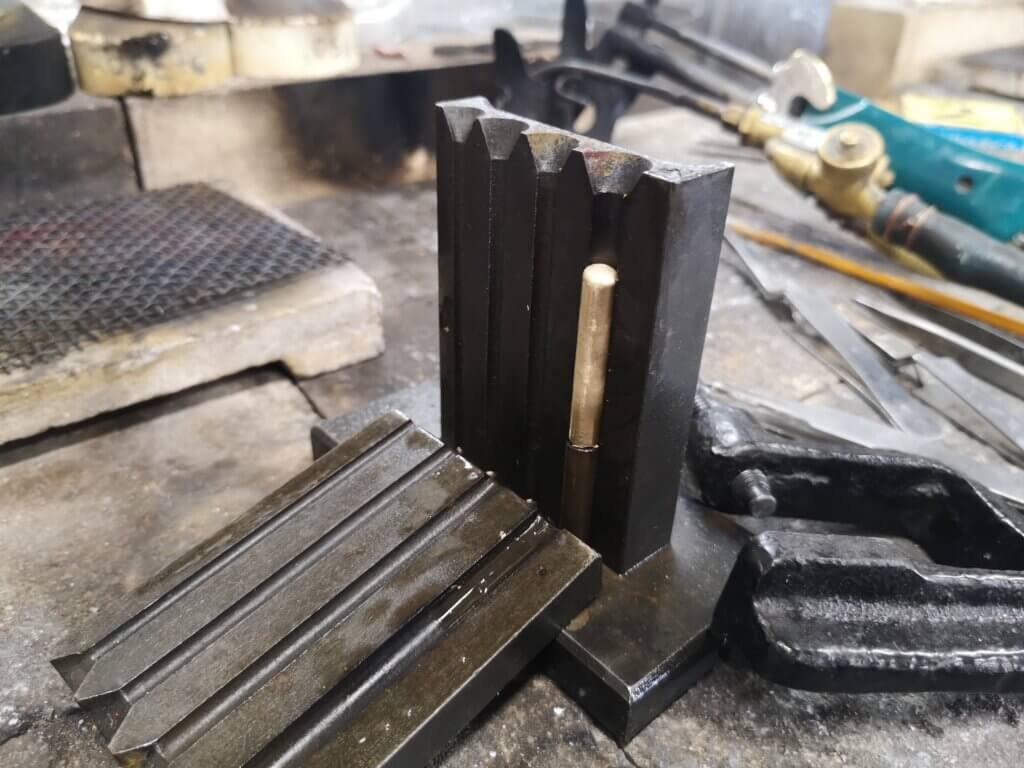
Electrical and thermal conductivity
Metals have properties that conduct electricity and conduct heat easily.
We work primarily with precious metals, and different materials conduct heat differently.
Silver is a very thermally conductive metal.
Also, platinum is a lower thermal conductor than silver, and heat is transmitted at a slower rate.
This difference greatly affects the re of brazing and other processing.
Brazing silver, which conducts heat quickly, such as when resizing a ring, becomes difficult.
luster
Metals have the property of reflecting light.
The precious metals we process are polished to a luster.
Silver and platinum are both silver-colored metals, but did you know they have different reflectance?
Silver] Approx. 98%~.
Platinum] Approx. 70%~.
Comparing silver and platinum polished rings, platinum is slightly more subdued in luster.
The photo shows 925 silver on the left and 950 platinum on the right. Platinum appears to have a more subdued luster.
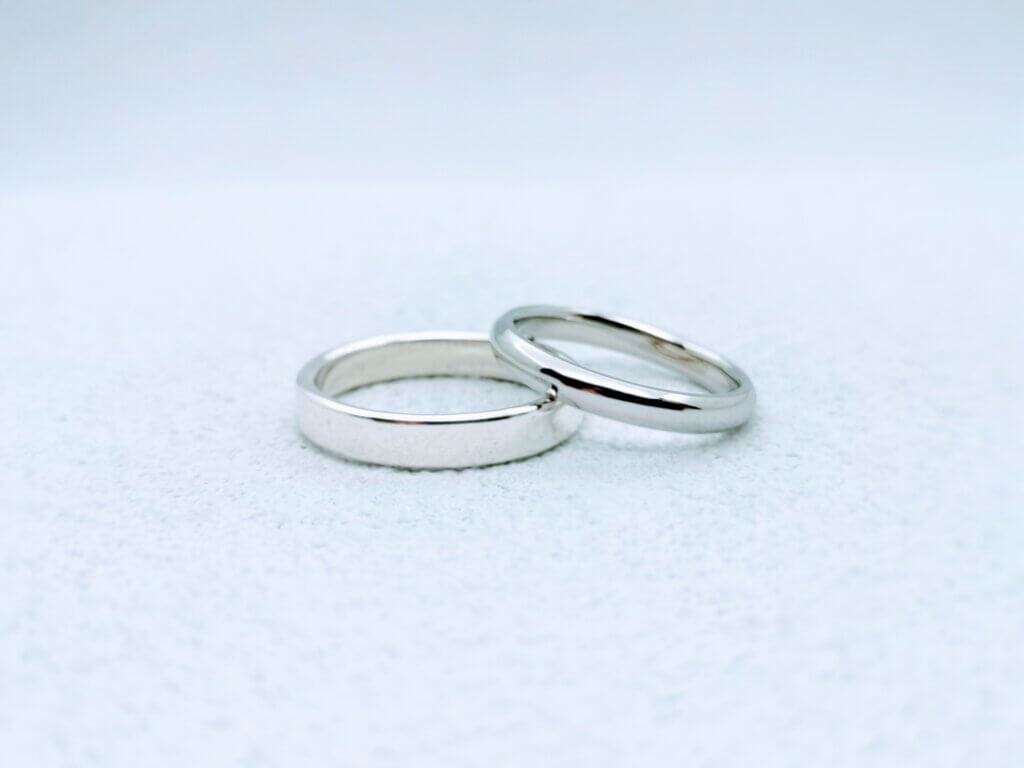
About the color of metal
Next, let's talk about the color of metals.
Platinum, gold, and silver are used in jewelry, but for actual use in jewelry, several metals are melted together to form an alloy.
I will explain alloys later, so for now I will explain the colors of pure metals. In fact, there are only two types of metals that have colors: gold (golden) and copper (red).
Other metals are basically silvery white.
Even silvery-white color is silver, although the color tone differs due to differences in reflectance and other factors.
What, even though there is yellow and pink gold in jewelry? I think.
Let me now explain the alloys.
About alloys used in jewelry
Metals used in jewelry come in a variety of colors.
It is a mixture of different metals to produce different colors. If it is a precious metal, the higher the purity, the more valuable it is, so if it is made of pure gold, pure platinum, or pure silver, wouldn't it be more valuable? However, pure metals are too soft to be used as wearable jewelry.
The higher the purity of a metal, the softer it is, and the lower the purity when mixed with other metals, the harder it becomes.
Therefore, several metals are mixed to give strength.
To illustrate with an example of the materials used in honey bees...
Pt950 95% platinum (5% palladium)
K18 yellow gold 75% gold (12.5% silver, 12.5% copper)
The color of the metal (silver and copper) mixed with pure gold is called "split gold," and the color will vary depending on the ratio and materials used.
Pink gold has a higher percentage of "copper" in the split gold.
Lime gold has a higher percentage of "silver" in the split gold.
For champagne gold, "palladium" is added in addition to this.
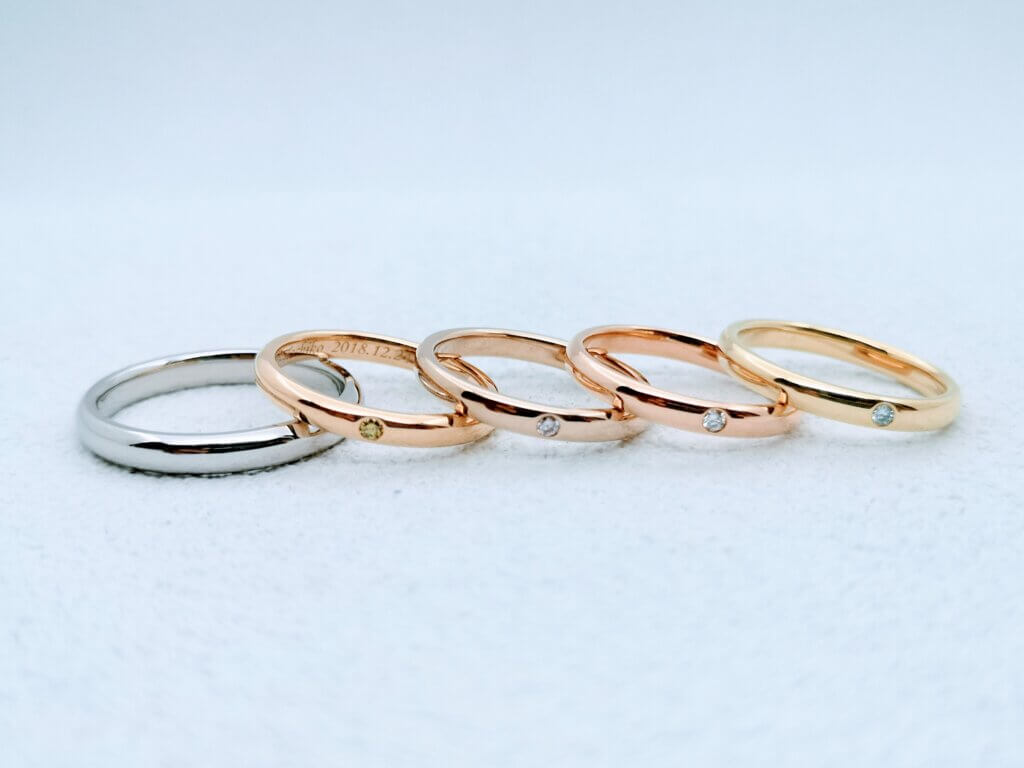
(from left to right: platinum 950, K18 yellow gold, K18 champagne gold, K18 pink gold, K18 lime gold)
K18 gold comes in a variety of colors, but the percentage of "pure gold" will be the same.
A mixture of one different metal is called a "binary alloy" and a mixture of two different metals is called a "ternary alloy.
As a unit of alloy grade, the
Silver and platinum are expressed in fractions of 1000.
Pt950 is a platinum alloy containing 951 TP2T pure platinum and 51 TP2T premium
Silver 925 is a silver alloy/gold with 92.51 TP2T pure silver and 7.51 TP2T split gold, expressed as 24 fractions of gold content.
It is indicated in K (karat).
K18 is 18/24, so it is a gold alloy with 75% pure gold and 25% split gold.
About metals used in jewelry
The properties of each metal are described below.
Melting point (melting temperature)
K18 approx. 905 degrees
SILVER925 approx. 910 degrees
Pt950 Approx. 1760 degrees
Melting point is the temperature at which a metal melts, or goes from solid to liquid. Since it differs depending on the metal, we use a different burner when making rings with K18 and with Pt950 platinum.
specific gravity
K18 15.5
SILVER925 10.35
Pt950 20.5
Specific gravity is difficult to understand only by comparing numbers, so I will briefly supplement this section.
Assume that a cube (dice) of 1 cm on a side is made of water.
It is 1 m3, so 1 g.
So the g of the same 1 m3 cube made of each metal is the weight expressed in terms of specific gravity.
K18 15.5g
SILVER925 10.35g
Pt950 20.5g
per ring.
What is surprising here is that when rings of the exact same shape are made in silver and platinum, the platinum ring weighs almost twice as much as the silver ring.
You can imagine that expensive, heavy specific gravity and high purity (Pt950) platinum jewelry has a higher price.
Other metals, gold and platinum, are corrosion-resistant metals, resistant to both acids and alkalis, and unaffected by sweating or bathing in hot springs.
SILVER925 turns black (sulfurization) due to sulfuric components, so be careful in hot springs.
Also, allergic reactions may occur in some people.
<Allergy Tidbits
Silver jewelry is often avoided by people with metal allergies.
Titanium is well known as a material that does not cause metal allergies, but in fact, "sterling silver" is also a metal that does not cause allergies.
Those who experience skin redness or itching from silver may possibly be having a metal allergy reaction due to nickel or copper in the split metal, not silver.
It was brief, but I wrote about the precious metals used in MITUBACI.
MITUBACI wedding and engagement rings are available in platinum and four different colors of gold.
I think you will enjoy choosing more if you pay attention not only to the color but also to the characteristics of each metal.
We craftsmen usually process precious metals, and each metal still has its own personality and quirks, which I would be happy to explain to you when you choose a ring at MITUBACI!
Next time I'll look into some of the metals we have around us!
Enjoy...
